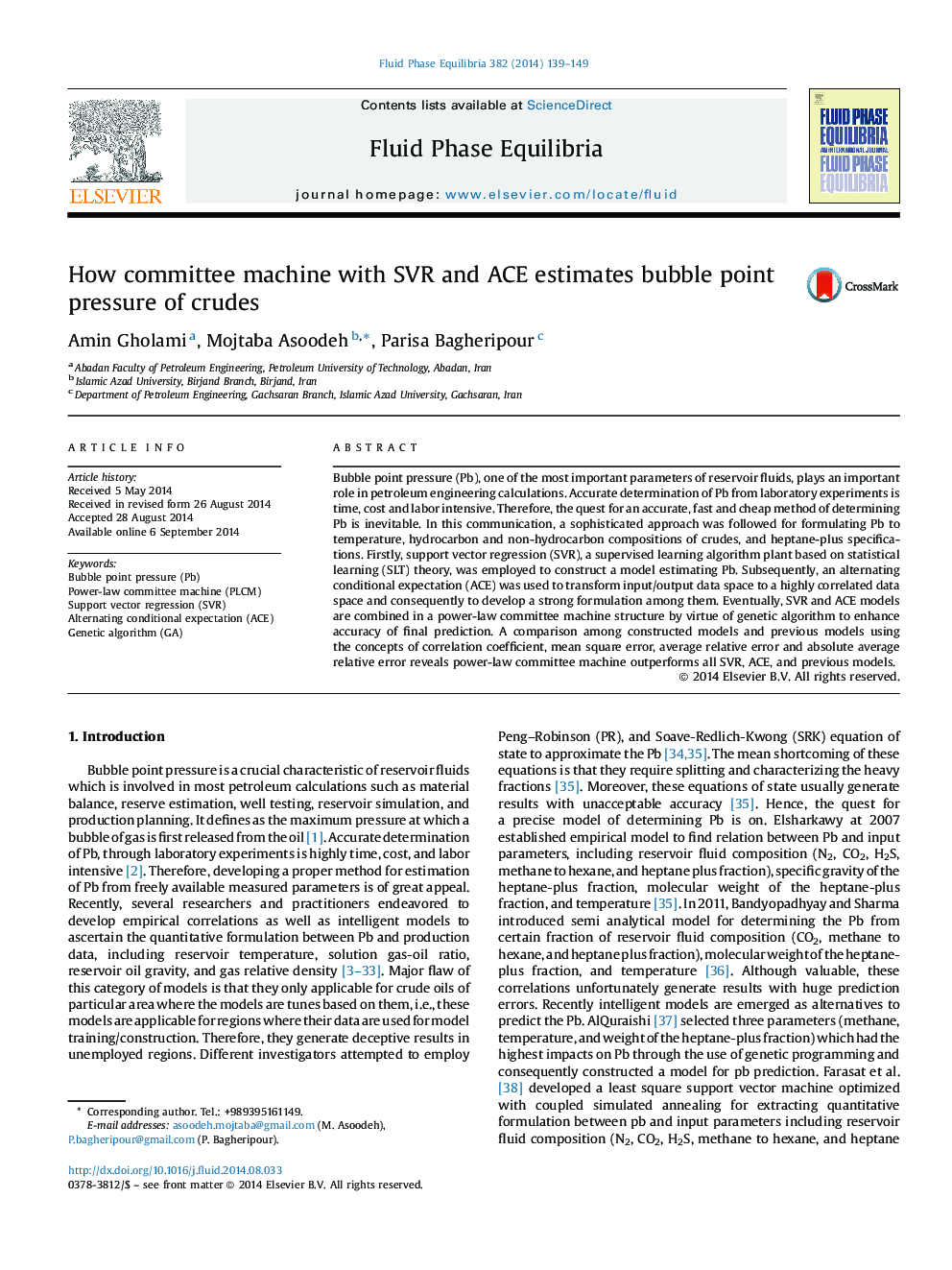| Article ID | Journal | Published Year | Pages | File Type |
|---|---|---|---|---|
| 201979 | Fluid Phase Equilibria | 2014 | 11 Pages |
•In this study, compositional data were formulated to bubble point pressure.•ACE and SVR methods were used for modeling aforementioned formulation.•ACE and SVR models were integrated through committee machine to enhance final accuracy.•Genetic algorithm took part as combiner of committee machine.•Proposed strategy surpassed all previously published models.
Bubble point pressure (Pb), one of the most important parameters of reservoir fluids, plays an important role in petroleum engineering calculations. Accurate determination of Pb from laboratory experiments is time, cost and labor intensive. Therefore, the quest for an accurate, fast and cheap method of determining Pb is inevitable. In this communication, a sophisticated approach was followed for formulating Pb to temperature, hydrocarbon and non-hydrocarbon compositions of crudes, and heptane-plus specifications. Firstly, support vector regression (SVR), a supervised learning algorithm plant based on statistical learning (SLT) theory, was employed to construct a model estimating Pb. Subsequently, an alternating conditional expectation (ACE) was used to transform input/output data space to a highly correlated data space and consequently to develop a strong formulation among them. Eventually, SVR and ACE models are combined in a power-law committee machine structure by virtue of genetic algorithm to enhance accuracy of final prediction. A comparison among constructed models and previous models using the concepts of correlation coefficient, mean square error, average relative error and absolute average relative error reveals power-law committee machine outperforms all SVR, ACE, and previous models.
